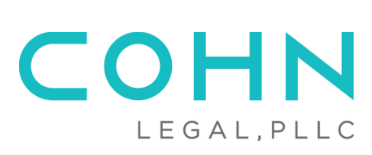Introduction
One of the first questions every entrepreneur and startup founder asks is: “Where can I check if my trademark is already taken?” Before you invest in branding, product launches, or marketing campaigns, you need to confirm that your chosen name, logo, or slogan is available.
Why? Because using or applying for a trademark that someone else already owns can lead to rejections, disputes, and even lawsuits. Your brand is everything, protect it from the start.
Let’s explore the tools, resources, and strategies you can use to check trademark availability and why working with an experienced trademark attorney is the safest path forward.
Step 1: Search the USPTO Database
The U.S. Patent and Trademark Office (USPTO) provides a free, searchable database called the Trademark Electronic Search System (TESS). This is the official resource for checking whether a mark is federally registered or pending registration in the United States.
To use TESS effectively:
-
Visit the USPTO website and access the TESS search portal.
-
Enter your proposed mark (word, phrase, or design).
-
Review results for marks that look or sound similar.
-
Pay close attention to the International Classes of goods or services.
For example, “Apple” for computers is a registered trademark, but “Apple” for furniture might be available since the goods and industries are unrelated.
Pro Tip: TESS is powerful but not always user-friendly. Many first-time searchers overlook marks with slight spelling variations, phonetic similarities, or translations, all of which may still block your application.
Step 2: Look Beyond the USPTO
Federal registration isn’t the only source of trademark rights. In the U.S., businesses can acquire “common law” rights simply by using a mark in commerce, even without registration.
That means you should also check:
-
State trademark databases: Each state has its own registry.
-
Business name databases: Many Secretary of State offices maintain searchable business entity records.
-
Domain name searches: See if your mark is being used online.
-
Social media platforms: Check for usernames or branding on Instagram, Twitter (X), TikTok, and LinkedIn.
Even if no federal registration exists, these uses could still create conflicts.
Step 3: Conduct a Professional Clearance Search
For entrepreneurs serious about protecting their brand, a professional clearance search is a must. While USPTO and state searches are helpful, they may not reveal every potential conflict. Professional databases are available only to attorneys and search companies, scan:
-
Federal, state, and international trademark databases.
-
Business names and trade directories.
-
Web domains and social media handles.
-
Phonetic equivalents, spelling variations, and foreign translations.
This deeper dive helps uncover risks that might not be obvious in a quick USPTO search.
Step 4: Analyze the Risk of Confusion
Finding another mark that looks somewhat similar doesn’t automatically mean your idea is blocked. The key legal question is whether consumers are likely to be confused. The USPTO and courts look at factors such as:
-
Similarity of the marks (sight, sound, and meaning).
-
Similarity of goods/services (are they related or completely different?).
-
Strength of the existing mark (famous brands get broader protection).
-
Channels of trade (where and how the goods are marketed).
For example, “Delta” is a famous mark for airlines but also exists for faucets. Because the goods and industries are unrelated, consumers aren’t likely to confuse them.
An experienced trademark attorney can help you evaluate whether a potential conflict is serious or low risk.
Step 5: International Trademark Considerations
If you plan to expand globally, don’t stop with the U.S.
-
WIPO Global Brand Database: The World Intellectual Property Organization provides a free search tool for international trademarks.
-
Madrid Protocol filings: If you file through the Madrid System, your U.S. application can extend to multiple countries.
-
National trademark offices: Each country maintains its own registry, which should be checked before expanding abroad.
Global checks are critical if your startup intends to scale internationally.
Why DIY Searches May Not Be Enough
It’s tempting to rely solely on a quick USPTO search. But here’s the risk:
-
You might miss a similar mark in a different spelling or translation.
-
You might overlook common law uses that still create legal problems.
-
You may misjudge the likelihood of confusion between marks.
The result? Wasted filing fees, Office Action refusals, or even costly rebranding after launch.
Your brand is worth everything. It deserves a careful, professional check before you move forward.
How a Trademark Attorney Helps
At Cohn Legal, PLLC, we simplify the process of checking and securing your trademark rights. Here’s how we help clients nationwide:
-
Perform comprehensive clearance searches that go beyond USPTO records.
-
Provide a legal risk analysis not just a data dump of similar marks.
-
Advise on filing strategies to maximize protection.
-
Represent clients before the TTAB in case of oppositions or cancellations.
-
Develop long-term IP strategies for growth and expansion.
With transparent flat-fee pricing and a free initial consultation, you’ll always know what to expect.
Conclusion
So, where can you check if your trademark is already taken? Start with the USPTO’s TESS system, explore state and online databases, and consider a professional clearance search for complete peace of mind.
But remember: it’s not just about finding existing marks, it’s about analyzing risk, planning ahead, and protecting your brand strategically.
Think big. Create and protect your dreams. And if you’re ready to check, file, and protect your trademark, we’re here to help.
Schedule your free consultation with Cohn Legal, PLLC today.

